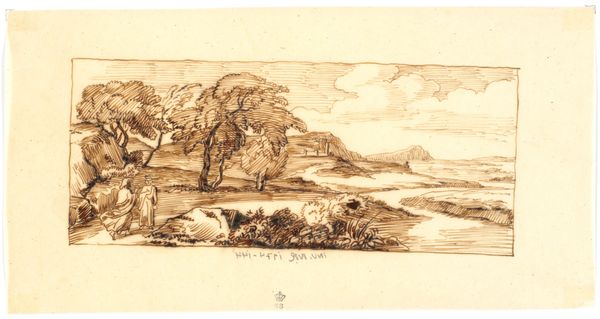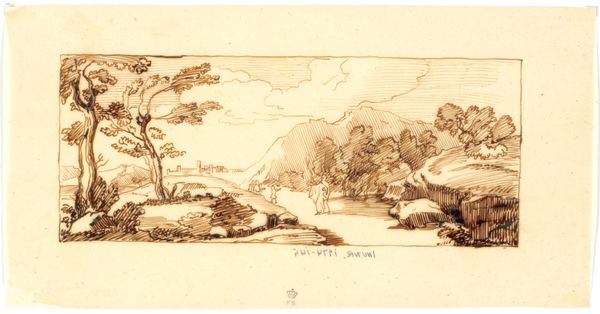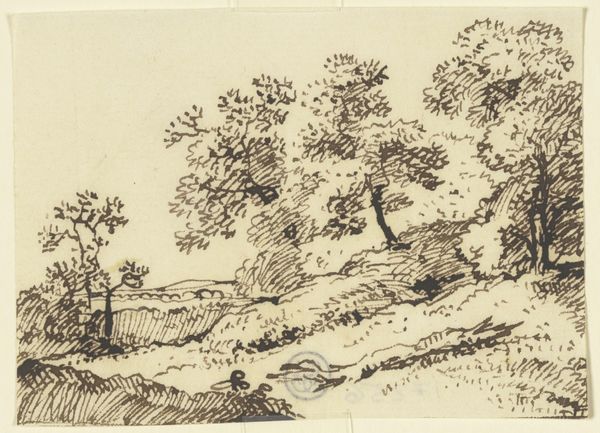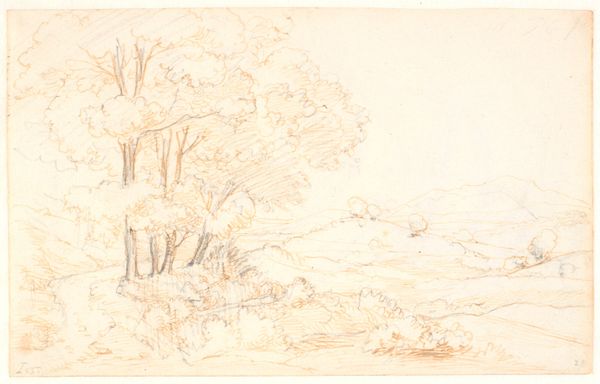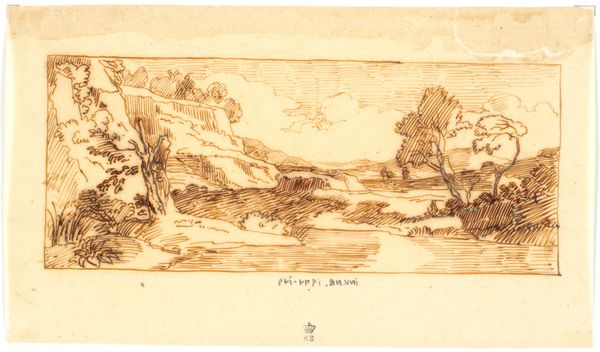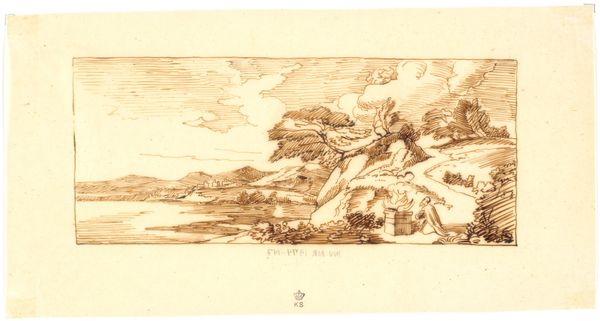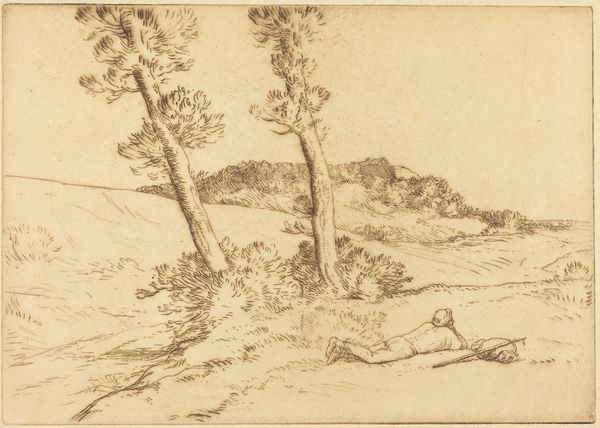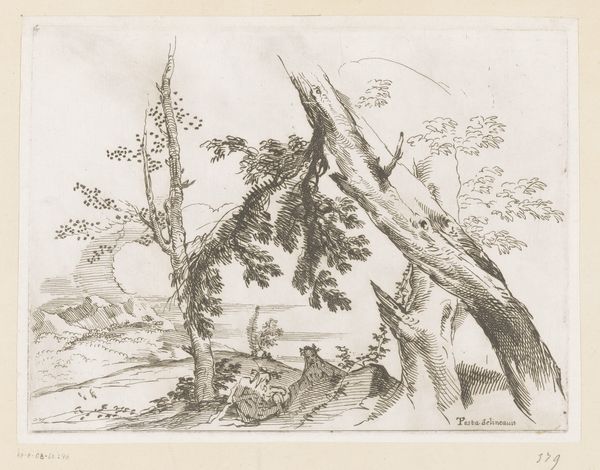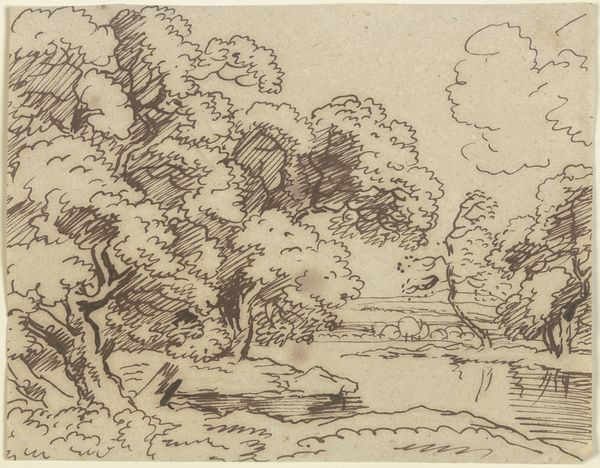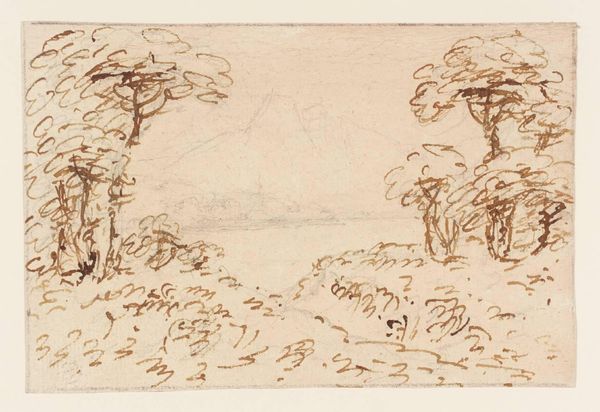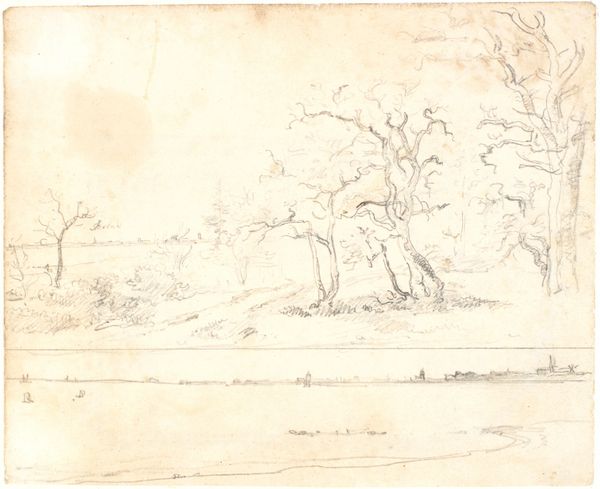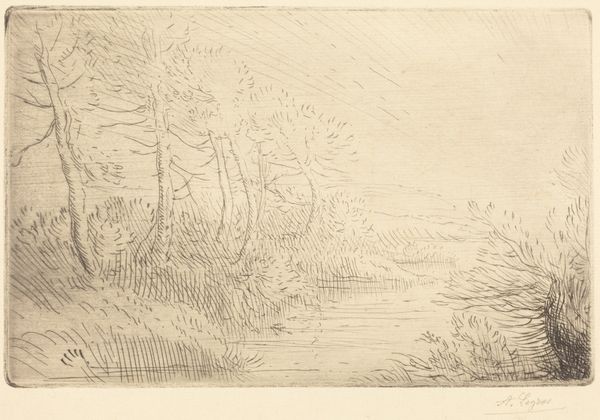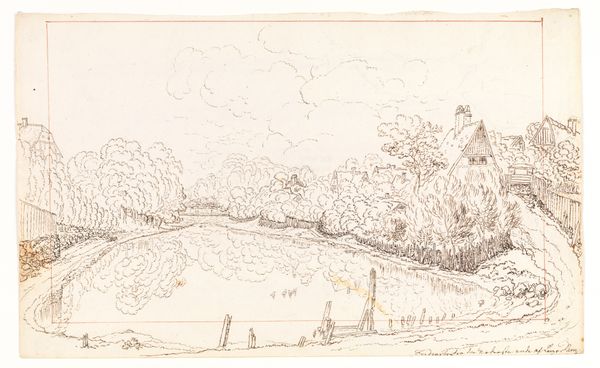
drawing, ink, pen
#
drawing
#
narrative-art
#
landscape
#
ink
#
romanticism
#
pen
Dimensions: 115 mm (height) x 221 mm (width) (bladmaal), 69 mm (height) x 168 mm (width) (billedmaal)
Curator: The artwork before us, created sometime between 1803 and 1848 by Martinus Rørbye, is titled "Landscape with Biblical Motif." It's a drawing executed in ink using a pen, currently housed here at the SMK. My immediate reaction is drawn to the figure in the lower-right, seemingly reaching towards the heavens. What do you see first? Editor: Well, the materialist in me zeroes in on the process. You have to admire the labor-intensive process using pen and ink to create such depth, especially within the landscape itself. You can really get lost in the texture here. But I can’t help feeling the starkness with which a religious narrative seems to clash with a very pastoral and pleasing landscape. Curator: That's a valid observation. This work evokes a longing and wonder typical of the Romantic era, drawing heavily on symbolism to convey profound spiritual meaning. That lone figure praying is key here: are they a representation of human suffering or hope? I mean, the Biblical aspect isn't immediately clear... it might almost be pagan, if you only looked at the nature. Editor: Yes, it’s subtle but look at the scale! That figure seems inconsequential within the vastness. The choice of materials further emphasizes this for me; ink on paper feels so fragile in contrast with what the image aims to evoke. I would question whether this very domestic art making has successfully achieved an elevated feeling beyond landscape drawing. Curator: Perhaps the artist wanted to explore that very tension. To place humanity in the face of something greater than itself. The ink medium might intentionally humble what would otherwise be a grandiose statement through oils or other processes. Editor: Maybe, or perhaps this was meant for a patron with particular tastes that had implications for the artist’s material condition… Food for thought! Curator: Indeed! The continuity of symbols remains relevant and powerful. The choice of subject alongside his choice of landscape makes you really feel Rørbye's emotional disposition as an artist. Editor: And from the perspective of social production, this intimate drawing provides glimpses into both the artistic conventions and labor practices prevalent at the time, all on one sheet of paper. A complex relationship!
Comments
No comments
Be the first to comment and join the conversation on the ultimate creative platform.
